Part:BBa_K2916016
Expression of AsnRS in E.coli
This part is used for expression of Asparaginyl-tRNA synthetase (AsnRS) needed for the PURE and OnePot PURE cell-free systems.
Biology
Transfer RNA (tRNA) is the molecule that enables the Genetic Code contained in the nucleotide sequence of a messenger RNA (mRNA) molecule to be translated into the amino acid sequence of a polypeptide chain. This function is catalysed by a group of enzymes called aminoacyl-tRNA synthetase (aaRS) which attach the appropriate amino acid onto its tRNA. This group consists of 20 different types of aminoacyl-tRNA synthetases, one for each amino acid of the genetic code. Those enzymes, in presence of Adenosine triphosphate (ATP) and Amino Acids, produces aminoacyl-tRNA (tRNA charged with an Amino Acid) that can be used by the ribosome to transfer the amino acid from the tRNA to the polypeptide being synthesised, according of course to the genetic code. Aminoacyl-tRNA therefore play a major role in RNA translation.
Asparaginyl-tRNA synthetase (AsnRS) attaches to Asparagine (codons: AAU and AAC)
In our part, besides the sequence encoding for the protein we also have a hexahistidine-tag to allow us purify the protein.
Usage
In our project we used AsnRS as a part of the protein solution needed for OnePot PURE cell-free system using the method of gravity flow affinity chromatography, as described in the protocol we designed.
Characterization
Expression and purification of AsnRS
AsnRS is one of the proteins we used for the OnePot PURE cell-free system. We expressed it in M15 E.coli strain using a pQE30 vector. The expression system has a T5 lac operator, RBS and a lambda t0 Terminator, enabling us to regulate the expression with IPTG.
Methods
AsnRS was purified using our protocol . To test if the protein was actually expressed, we performed a SDS-PAGE that is presented below. On the left side we can see the results included in the initial OnePot PURE paper (Lavickova et al, 2019) while on the right (batch1_a,b and batch2_a,b) are the solutions we produced ourselves. (The procedure we followed and the conditions of the experiment can be found here).
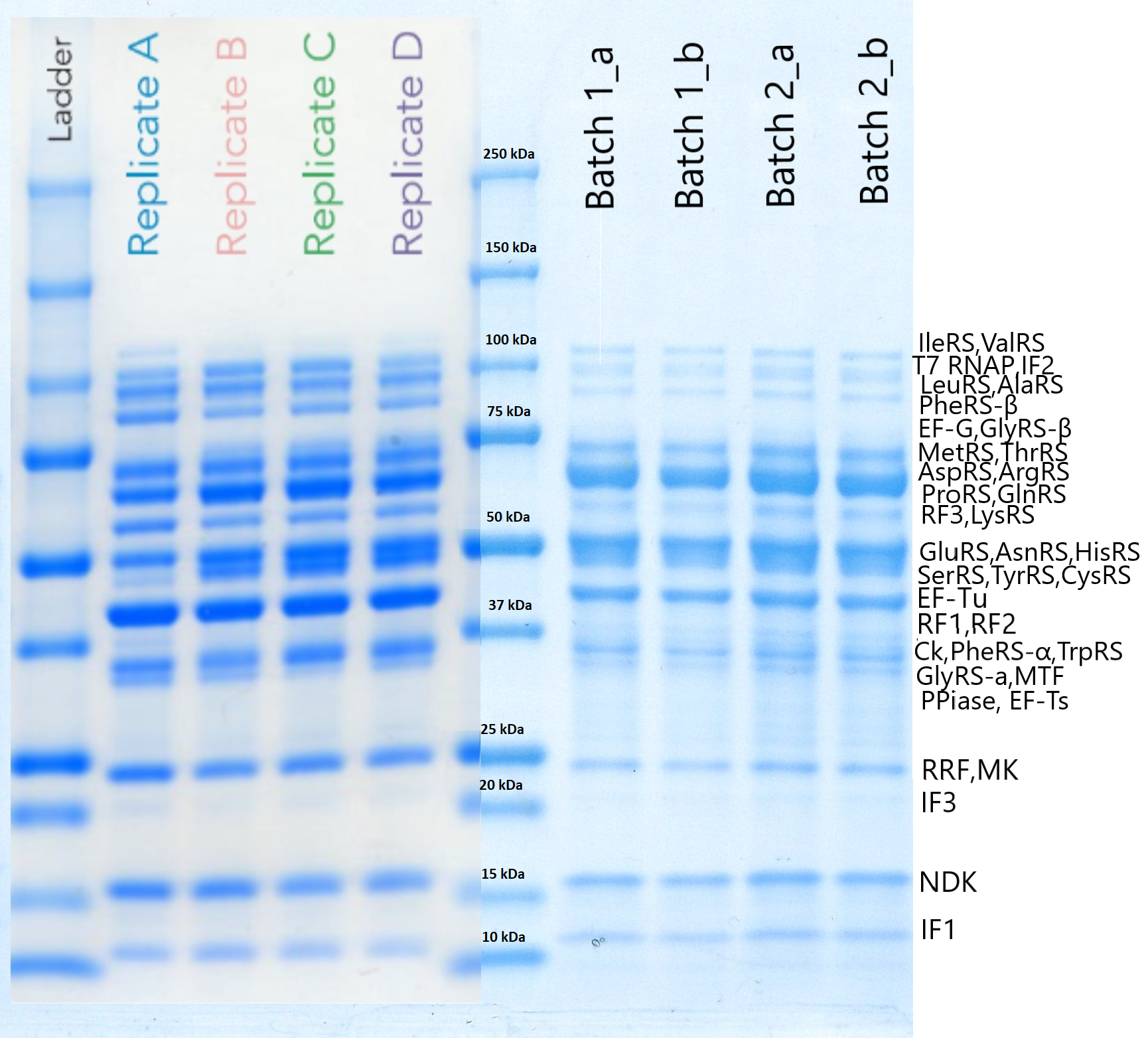
Conclusion
AsnRS has a molecular weight of around 53kDa, but even though we cannot be absolutely sure if the band shown is only due to it, we may assume that it is expressed. To verify the existence and functionality of this protein we need to proceed with more experiments that would be mainly focused on the efficiency of the system.
OnePot PURE functionality test
To make sure that we have all the proteins in our OnePot PURE protein solution, and that they all function properly we need check if proteins can be expressed in our OnePot PURE cell-free system.
Methods
We expressed superfolding GFP following the protocol we designed in 10μl reactions, and measured the fluorescence on a plate reader at excitation wavelength of 535nm. We tested the expression using different concentrations of the sf GFP DNA template and also compared it with the fluorescence produced in PURExpress from NEB.
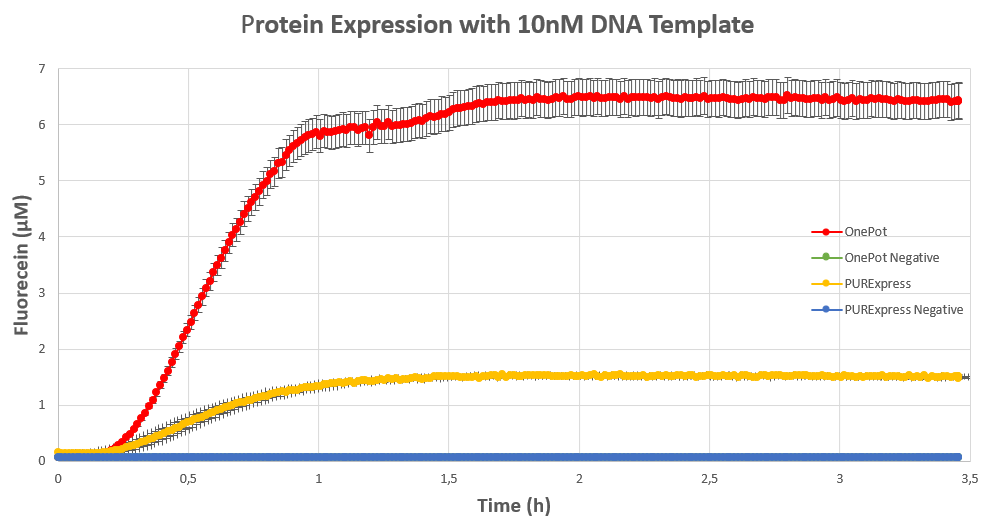
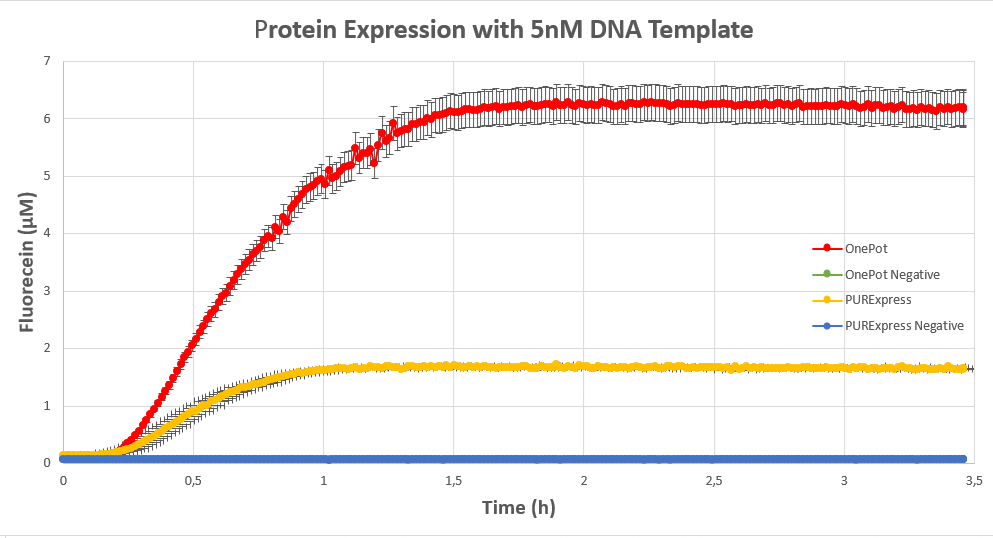
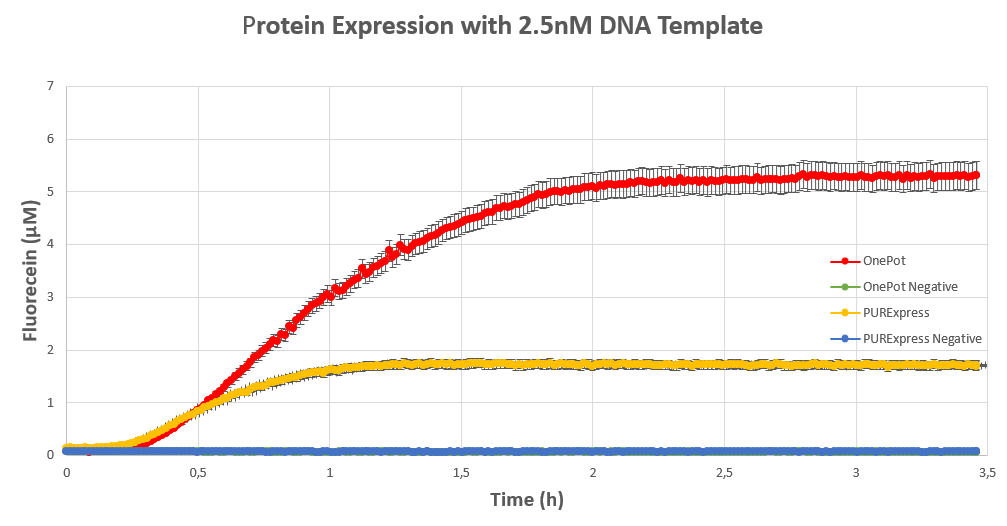
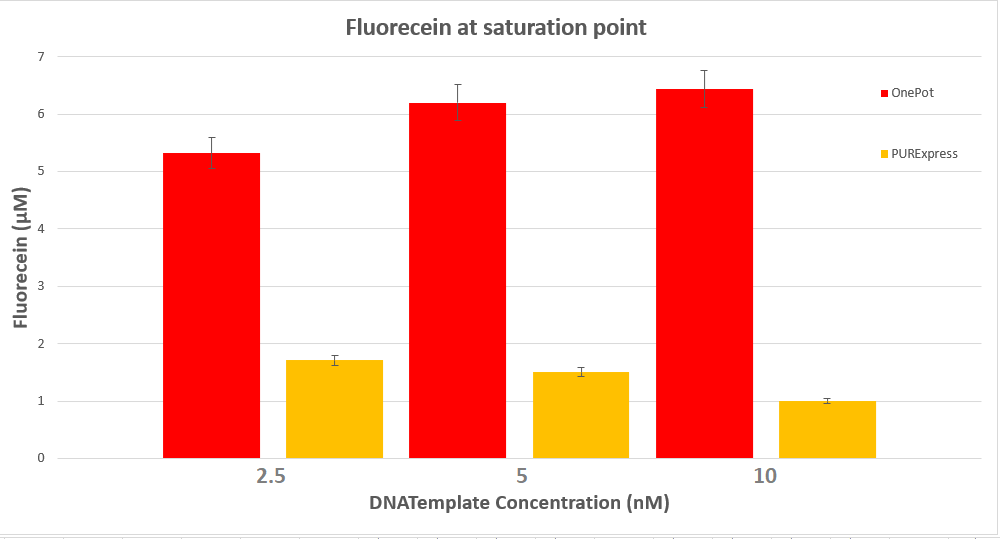
Conclusion
The expression was successful so we can confirm that AsnRS exists in our protein solution and is also functioning properly.
Sequence and Features
- 10COMPATIBLE WITH RFC[10]
- 12INCOMPATIBLE WITH RFC[12]Illegal NotI site found at 1119
- 21COMPATIBLE WITH RFC[21]
- 23COMPATIBLE WITH RFC[23]
- 25COMPATIBLE WITH RFC[25]
- 1000COMPATIBLE WITH RFC[1000]
| None |
